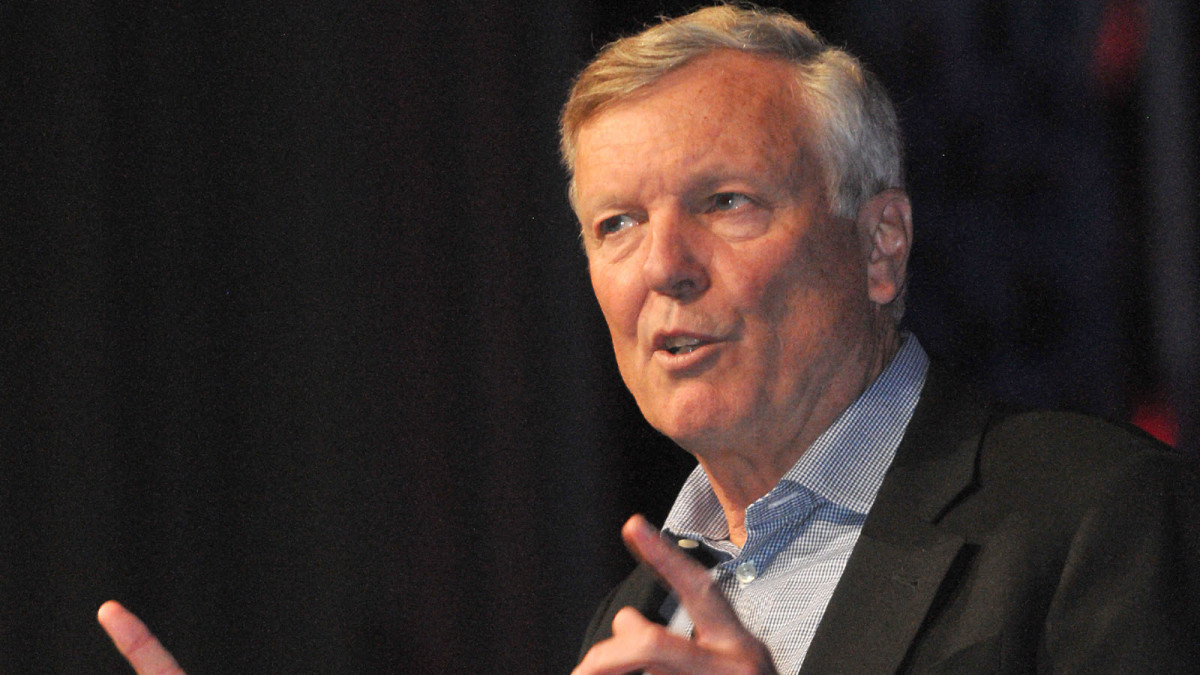Charter's Rutledge: Broadband, Skinny Bundles, Apps Helped Drive Q1 Video Results
Cable company had much better than expected TV losses in the first quarter

Charter Communications chairman and CEO Tom Rutledge said that the cable operator is doing better than expected. Video results in the first quarter were driven by a combination of sports-free offerings and the availability of its products via apps.
Charter lost about 70,000 video customers in Q1, less than half the 152,000 it lost in the same period last year and well below analysts’ consensus estimates for 170,000 losses.
At the virtual MoffettNathanson Media & Communications conference Monday, Rutledge said a combination of broadband pull-through -- where new broadband customers, especially from satellite TV services, buy a video package as well as a high-speed data product -- and sports-free video packages, like ethnic offerings and Spectrum Essentials, helped drive results.
Rutledge told moderator Craig Moffett -- principal and senior analyst at MoffettNathanson -- that even those offerings are limited because of broader traditional video contracts that require Charter sell a minimum threshold of sports-driven programming before other tiers. But he added customers are finding ways to access the services they want.
“We also have gone to an app-based distribution model,” Rutledge said. “We have 8 million customers now who are connected to us through apps as opposed to set-top boxes. What that does is it reduces our capital intensity, it reduces our revenue from equipment, but it also allows us to have a better user experience and it allows us to be on more devices, the consumer can save money. Our application is the No. 1 rated app in the country for its category.”
Although those factors gave Charter a slightly different trajectory than its industry peers in the quarter, it doesn’t negate the trend that traditional video’s decline is accelerating.
“We just have some tools that make it a little better for us,” Rutledge said. “Ultimately, being an app based provider will allow us to be, over the longer term, a better marketer of new video.”
Broadcasting & Cable Newsletter
The smarter way to stay on top of broadcasting and cable industry. Sign up below
As video’s importance in the overall cable bundle has diminished over the years -- every major publicly traded cable operator has significantly more broadband customers than video customers -- Rutledge said distributors’ leverage with non-sports programmers has changed.
Related: Rutledge: Sports Cost Relief is Up to Networks, Leagues
“We have leverage in the sense that there’s not that much margin in the video business, so letting our customers have higher and higher rates is a problem, ” Rutledge said, adding that as sports costs rise, sports programming is becoming more of an elite product.
Related: Sinclair: Sports Rebates Could Come
“[T]he sports package is still pretty much intact as a product and we haven’t chosen to try to destroy it, or do anything but continue to sell it,” Rutledge said. “But continuing to sell it means it’s continuously increasing in cost and therefore customers have higher and higher bundled cable bills. Some of the downside of selling that product is that people’s ire about their bill is projected onto us as opposed to the content companies. There’s some negativity associated with being a purveyor of high-cost content, but people still want to watch it in big numbers and it’s just becoming more of an exclusive product, slowly, because of its high cost.”
